15 Low-Fat, High-Protein Snacks to Shed Pounds

High-protein foods are incredibly useful when it comes to health and weight loss. "Protein is invaluable when it comes to increased fullness and satisfaction after a meal," registered dietitian Annalise Pratt, RD, tells the Cleveland Clinic. "Knowing how to use this key nutrient as part of a balanced diet puts the odds of losing weight on your side." Protein and carbohydrates have 4 calories per gram, while fat has 9 calories per gram. Healthy fats are an essential part of a balanced diet, but in order to choose exactly where to include those fats, it's best to know the macro breakdown of foods. Here are 15 foods and snacks to comfortably fit into your high-protein, low-fat macros.
Greek Yogurt
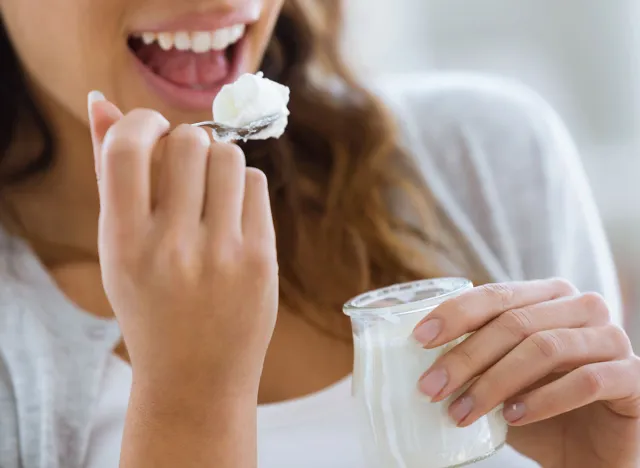
Low-fat Greek yogurt is a fantastic high-protein, low-fat option: 100 grams of low-fat Greek yogurt contains 9.95 grams of protein and 1.92 grams of fat. Pair it with a low-calorie, low-sugar fruit like blueberries or strawberries for a delicious, healthy snack.
Egg Whites
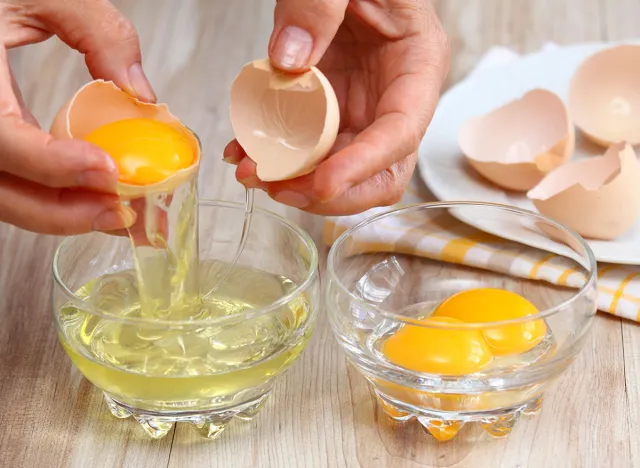
Egg whites contain 4 grams of protein and 0 grams of fat (all the fat is in the yolk). While the whole egg is a nutritional powerhouse, egg whites are a great source of protein if you're counting macros and prefer to get nutritional fat from a different source. Egg white omelets are a nice option for enjoying low-calorie vegetables such as mushrooms.
Chickpea Snacks
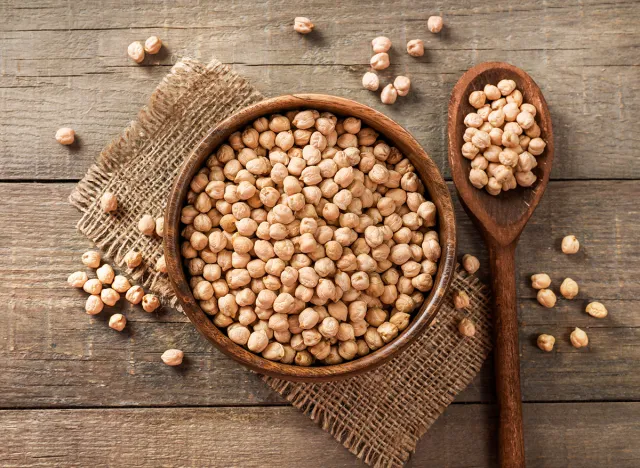
Chickpeas have 8.86 grams of protein and 2.59 grams of fat per 100 grams. "High-fiber foods can help to promote a feeling of fullness and satiety by delaying digestion and adding bulk to meals," says the Harvard T.H. Chan School of Public Health. The satiating effect of the high fiber and protein content of chickpeas may help with weight management.
RELATED: 15 Quick Ways to Lose Body Fat Percentage in a Week
Lentils

100 grams of lentils contains 9.02 grams of protein and just 0.38 grams of fat. "Lentils have been around for ages, but it's taken a while for us to realize how powerful they are for our bodies," dietitian Elyse Homan, RD, tells the Cleveland Clinic. "They aren't just a cheap alternative to meat anymore. They can be the foundation for a variety of meals and make a real difference to your health."
Quinoa

100 grams of quinoa contains 4.4 grams of protein and 1.92 grams of fat. "Unlike some plant proteins, quinoa is a complete protein, meaning that it contains all nine essential amino acids that our bodies cannot make on their own," according to the Harvard T.H. Chan School of Public Health. "Quinoa is also naturally gluten-free and can be eaten safely if one has gluten intolerance such as celiac disease."
RELATED: The Ultimate Guide to Getting Fit as a Pear Body Type
High-Protein Bread
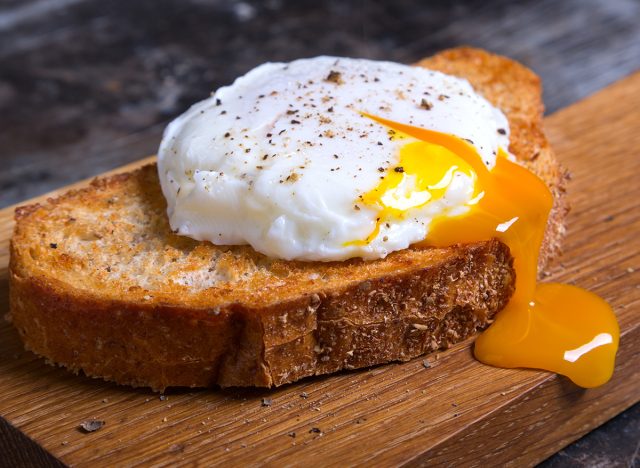
There are many high-protein breads on the market, with protein counts up to 30 grams per serving. Always check the ingredient labels for protein and fat content. Pair with your egg white omelet or low-fat cottage cheese with honey.
Ground Turkey
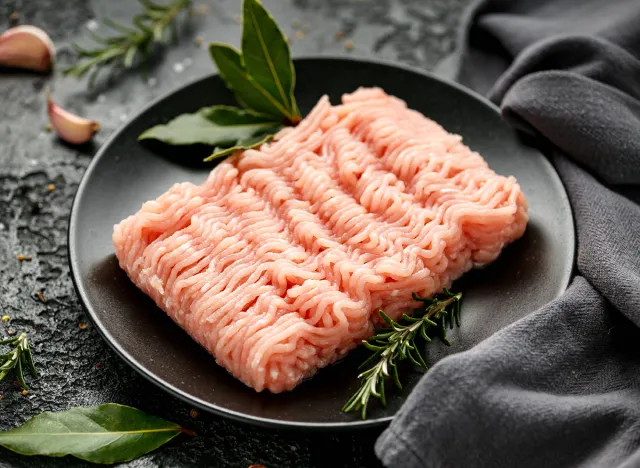
100 grams of lean ground turkey contains 18.7 grams of protein and 8.34 grams of fat. It is also rich in choline and B vitamins. "Turkey is a great source of protein, rich in many vitamins and minerals, and is low-fat – if you don't eat the skin," Catherine M. Champagne, professor of nutritional epidemiology and dietary assessment and nutrition counseling at Louisiana State University's Pennington Biomedical Research Center in Baton Rouge, tells the American Heart Association.
Canned Tuna
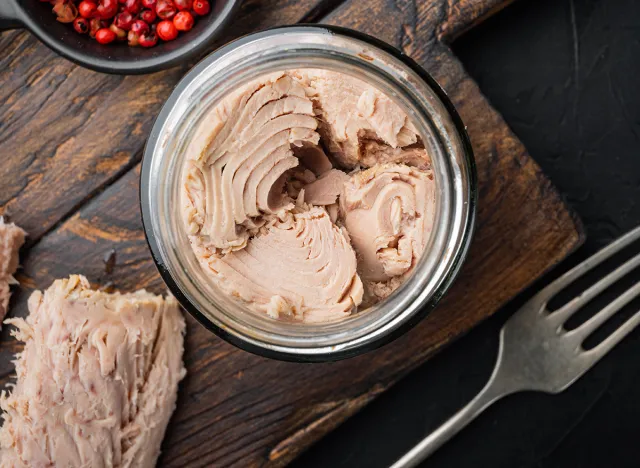
Don't overlook your basic canned tuna! 100 grams of fresh tuna contains 24.4 grams of protein and just 0.49 grams of fat. Canned tuna is affordable, is a quick and easy snack, and pairs well with low-calorie vegetables such as cucumber or lettuce. The FDA recommends 2-3 servings of cooked fish a week.
Shrimp
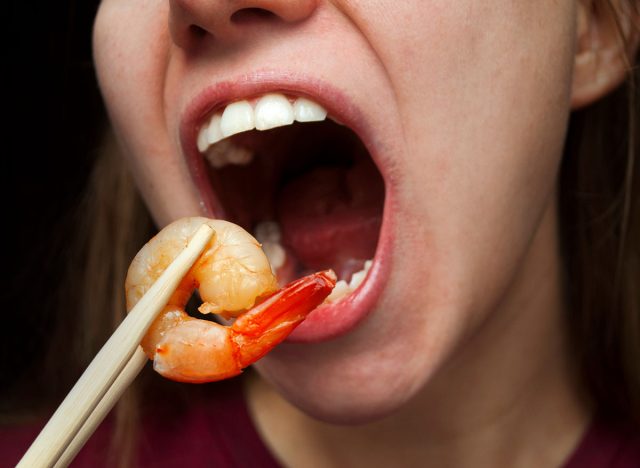
Shrimp is delicious and very high in protein. 100 grams of shrimp contains 20.1 grams of protein and just 0.51 grams of fat. "Shrimp is a lean source of high-quality protein. However, because it is low in total fat it is also low in omega-3 fatty acids," says Alice H. Lichtenstein, DSc, director of Tufts' HNRCA Cardiovascular Nutrition Laboratory.
RELATED: 12-3-30 Walking Method: 20 Proven Tips to Lose Weight Faster
Cooked Black Beans
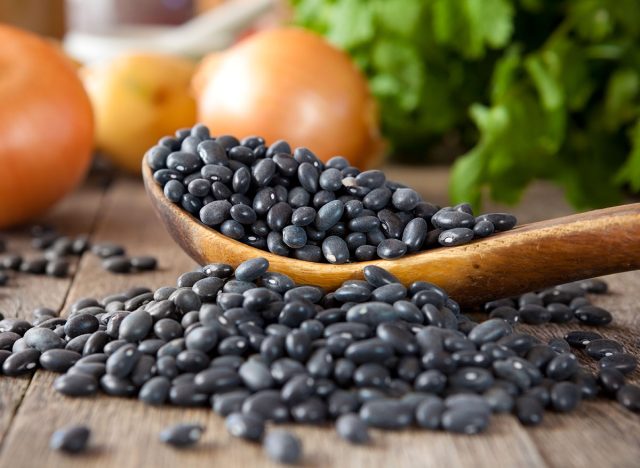
100 grams of cooked black beans has 8.86 grams of protein and 0.54 grams of fat. "Beans are considered a 'superfood' because they are one of the most nutritious foods you can eat," according to UMass Chan Medical School. "As a result of their high fiber content, beans help to protect against diabetes, cardiovascular disease, and maybe even some cancers."
Wild-Caught Salmon
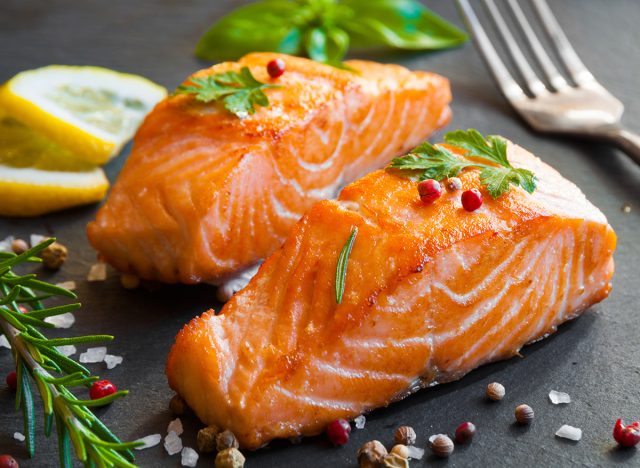
100 grams of wild-caught salmon has 19.8 grams of protein and 6.34 grams of fat. "This fish is one of the few food sources of vitamin D, a nutrient that plays a crucial role in bone health," Allison P. Lutz, RD, tells UPMC HealthBeat. "Adequate vitamin D is essential for your body to absorb calcium and phosphorus, which support strong, healthy bones."
High-Protein Pasta
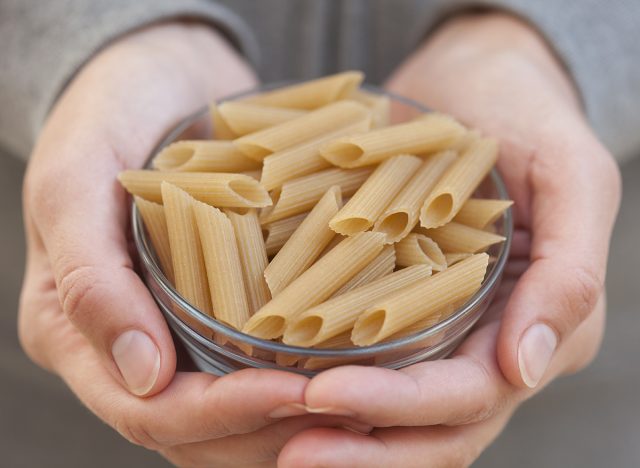
Protein pastas are a popular option for a high-fiber, delicious meal or snack. High-protein pastas also tend to be lower in carbs. These pastas are usually made with beans, peas and lentils.
Cottage Cheese
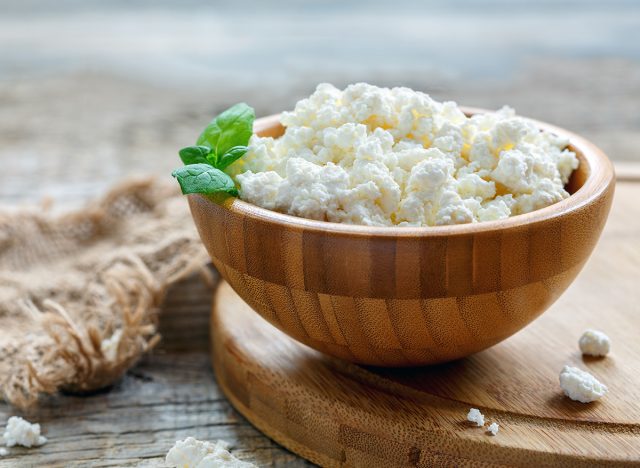
Low-fat cottage cheese has 11 grams of protein and 2.3 grams of fat per 100 grams. "Cottage cheese is rich in casein protein. It's a complete protein that provides essential amino acids, which are all the building blocks of protein that your body needs," says the Cleveland Clinic.
RELATED: 5 Calorie-Burning Full Body Kettlebell Exercises You Need to Try
Protein Powder Shake
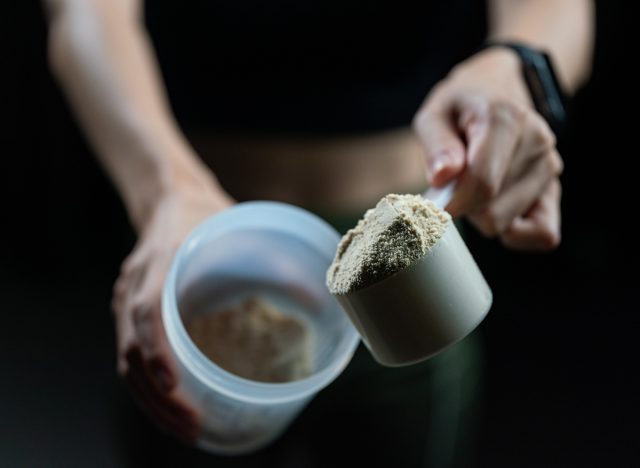
There are so many protein powders on the market with varying amounts of protein per serving. Always check the ingredients for added sugar content to keep your protein shake a healthy option. Try it with low-calorie liquids such as plant milk.
High-Protein Cereal

High-protein cereals usually contain nuts and seeds to help keep you full and satiated. Some brands have up to 20 grams of protein per serving. Always check the label for added sugars which might derail your diet.
💪🔥Body Booster: Protein is an essential amino acid that helps keep you full and satiated.




